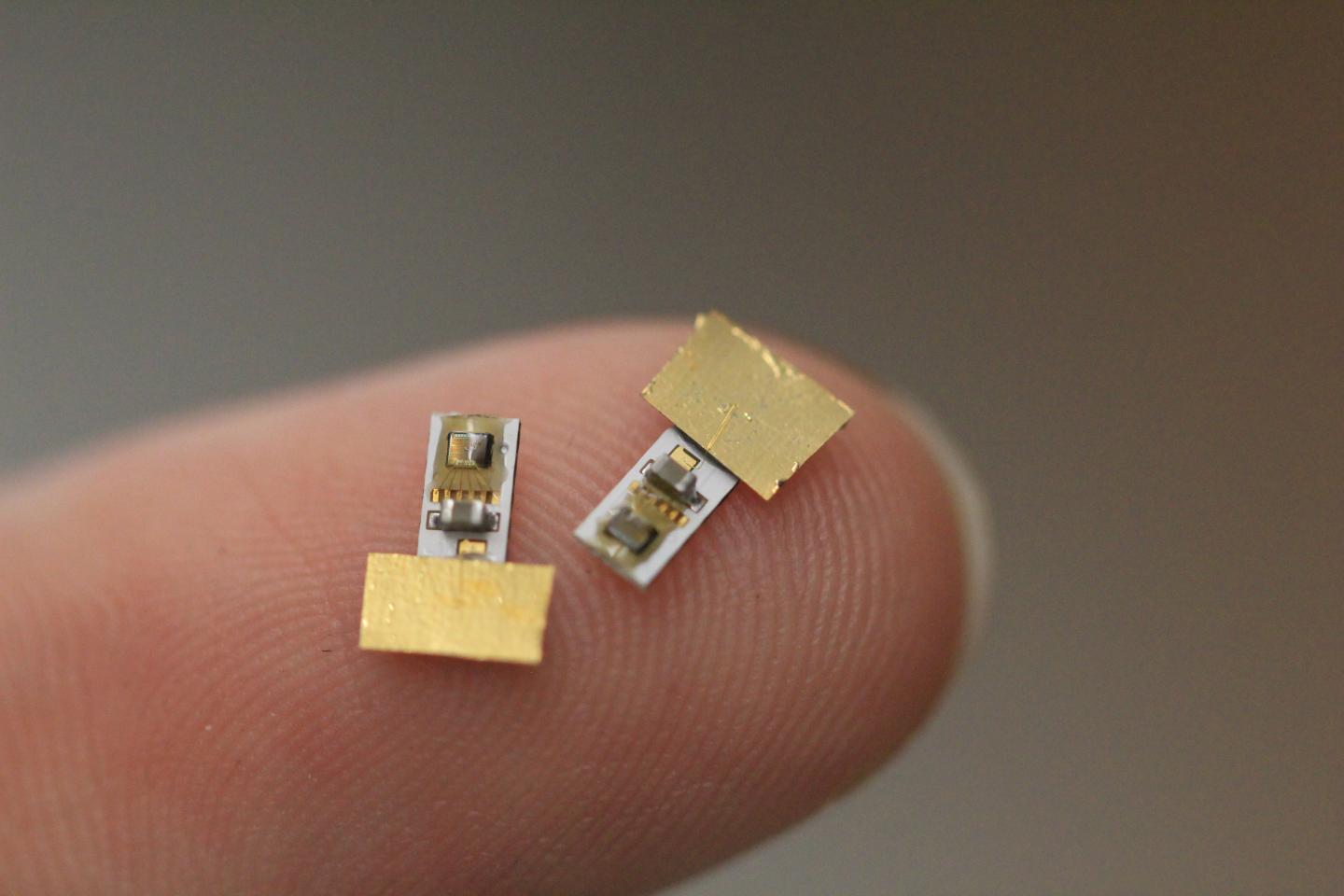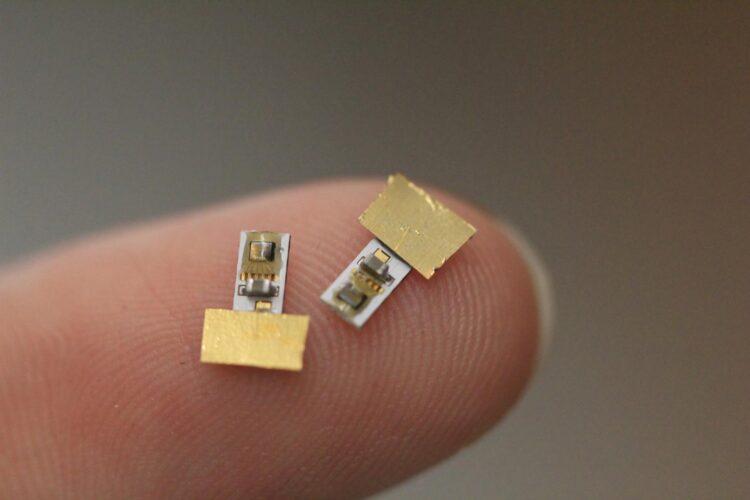Stimulators win top award at circuitry conference, could aid spinal cord, heart therapies

Credit: Secure and Intelligent Micro-Systems Lab/Rice University
HOUSTON – (May 10, 2021) – Implants that require a steady source of power but don’t need wires are an idea whose time has come.
Now, for therapies that require multiple, coordinated stimulation implants, their timing has come as well.
Rice University engineers who developed implants for electrical stimulation in patients with spinal cord injuries have advanced their technique to power and program multisite biostimulators from a single transmitter.
A peer-reviewed paper about the advance by electrical and computer engineer Kaiyuan Yang and his colleagues at Rice’s Brown School of Engineering won the best paper award at the IEEE’s Custom Integrated Circuits Conference, held virtually in the last week of April.
The Rice lab’s experiments showed an alternating magnetic field generated and controlled by a battery-powered transmitter outside the body, perhaps on a belt or harness, can deliver power and programming to two or more implants to at least 60 millimeters (2.3 inches) away.
The implants can be programmed with delays measured in microseconds. That could enable them to coordinate the triggering of multiple wireless pacemakers in separate chambers of a patient’s heart, Yang said.
“We show it’s possible to program the implants to stimulate in a coordinated pattern,” he said. “We synchronize every device, like a symphony. That gives us a lot of degrees of freedom for stimulation treatments, whether it’s for cardiac pacing or for a spinal cord.”
The lab tested its tiny implants, each about the size and weight of a vitamin, on tissue samples, live hydra vulgaris and in rodents. The experiments proved that over at least a short distance, the devices were able to stimulate two separate hydra to contract and activate a fluorescent tag in response to electrical signals, and to trigger a response at controlled amplitudes along a rodent’s sciatic nerve.
“There’s a study on spinal cord regeneration that shows multisite stimulation in a certain pattern will help in the recovery of the neuro system,” Yang said. “There is clinical research going on, but they’re all using benchtop equipment. There are no implantable tools that can do this.”
The lab’s devices, called MagNI (for magnetoelectric neural implants) were introduced early last year as possible spinal cord stimulators that didn’t require wires to power and program them. That means wire leads don’t have to poke through the skin of the patient, a situation that would risk infection. The other alternative, as used in many battery-powered implants, is to replace them via surgery every few years.
###
Rice graduate student Zhanghao Yu is lead author of the paper. Co-authors are graduate students Joshua Chen, Yan He, Fatima Alrashdan and Amanda Singer, staff specialist Benjamin Avants and Jacob Robinson, an associate professor of electrical and computer engineering and bioengineering. Yang is an assistant professor of electrical and computer engineering.
The National Institute of Biomedical Imaging and Bioengineering and National Science Foundation supported the research.
Read the paper at https:/
This news release can be found online at https:/
Follow Rice News and Media Relations via Twitter @RiceUNews.
Related materials:
Secure and Intelligent Micro-Systems Lab (Yang lab): https:/
Robinson Lab: https:/
Electrical and Computer Engineering: https:/
George R. Brown School of Engineering: https:/
Video:
https:/
A video demonstrates fluorescent signals and movement by a hydra vulgaris triggered by timed MagNi devices developed at Rice University. The wireless implants allow for multiple stimulators to be programmed and magnetically powered from a single transmitter outside the body. (Credit: Secure and Intelligent Micro-Systems Lab/Rice University)
Images for download:
https:/
A new version of wireless implants developed at Rice University allows for multiple stimulators, as seen here, to be programmed and magnetically powered from a single transmitter outside the body. The implants could be used to treat spinal cord injuries or as pacemakers. (Credit: Secure and Intelligent Micro-Systems Lab/Rice University)
https:/
Rice engineers have further developed neural implants that can be programmed and charged remotely with a magnetic field. The new version allows multiple implants to be charged and programmed from a single transmitter. From left, project leaders Kaiyuan Yang, Zhanghao Yu, Joshua Chen and Jacob Robinson. (Credit: Jeff Fitlow/Rice University)
Located on a 300-acre forested campus in Houston, Rice University is consistently ranked among the nation’s top 20 universities by U.S. News & World Report. Rice has highly respected schools of Architecture, Business, Continuing Studies, Engineering, Humanities, Music, Natural Sciences and Social Sciences and is home to the Baker Institute for Public Policy. With 3,978 undergraduates and 3,192 graduate students, Rice’s undergraduate student-to-faculty ratio is just under 6-to-1. Its residential college system builds close-knit communities and lifelong friendships, just one reason why Rice is ranked No. 1 for lots of race/class interaction and No. 1 for quality of life by the Princeton Review. Rice is also rated as a best value among private universities by Kiplinger’s Personal Finance.
Jeff Falk
713-348-6775
[email protected]
Mike Williams
713-348-6728
[email protected]
Media Contact
Mike Williams
[email protected]
Original Source
https:/





